Organising our sewing space, tools, fabrics and patterns help us make better, more reasoned decisions when we start a new project. A lot of you have already been won over by the I AM Organised sewing planner. It helps you organise anything sewing related whether it be tracking orders, listing your patterns, making a shopping list, writing down your ideas for pattern hacks.
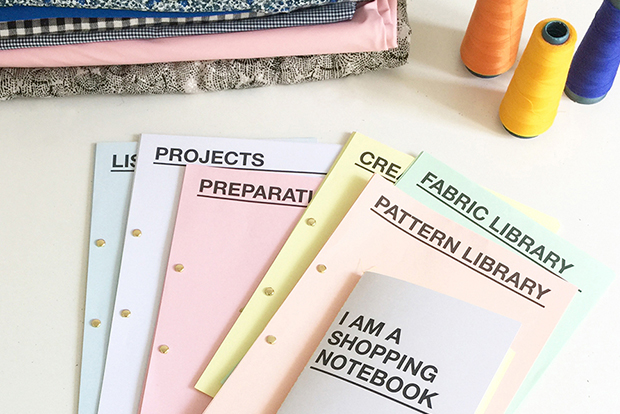
Today we go deeper into how to catalogue your fabric and how to fold and organise them to optimise your storage space.
The years go by and often the fabrics pile up. A simple (and the most ecological and economical) solution would be to buy fabrics only when you have a project in mind. But we have to be realistic and even if we try to do this, there’s always some lovely fabric we desperately want and therefore buy.
In the end we don’t necessarily sew them and we even forget we had some of them. Often, we have to dive head first into a pile of fabrics to be able to find the perfect one for our next project. Then we realise we don’t have enough of it… It’s not only frustrating but it’s also wasting precious sewing time.
Not anymore! We give you a few tips to catalogue, fold and store your fabrics to be able to easily find the perfect fabric when time comes. Yes, at first the work can seem daunting but it’s totally worth it. The process will most likely spark inspiration and you might end up sewing some of those fabrics immediately. Your fabrics will be better preserved and arranged which in the end will be a gain of time and space.

WASHING FABRICS
Whether you’ve just received fabric you bought online or you’re coming back from your local haberdashery, put your new fabric in the washing machine or at least in the laundry basket so you don’t forget to wash it. Pre-washing your fabric will avoid your garment to shrink and will remove any extra dyes and chemicals that have been used during production. It is then best to wash one fabric at a time and before cutting it… Once washed, your fabric will also soften a bit and so you will know what kind of drape (or no drape) your fabric has.
PRINTING THE SWATCH CARDS
For this article and because we have quite a few fabrics we’ve used the Fabric Stash 2 document from the I AM Organised sewing planner to create swatch cards.
- Print as many sheets of Fabric Stash 2 documents as necessary to be able to itemise your swatches and create your fabric swatch index (maybe even print some extra ones for future fabrics). For this one we used 250gsm paper which will hold better if you punch a hole in it and you handle it often.
- Cut following the lines and perforate the left margin in order to insert it in a ring once it’s been filled in.
You are now ready to catalogue your fabric stash.
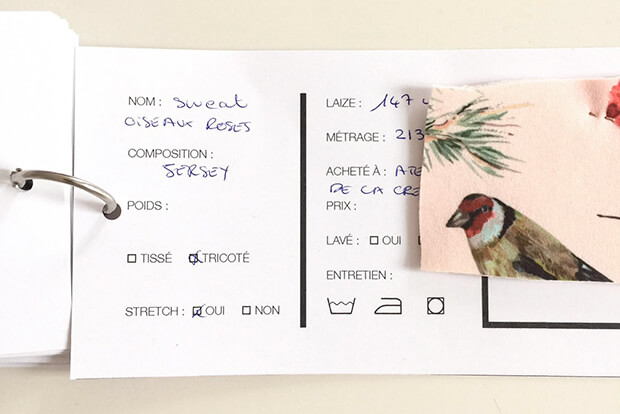
PREPARE YOUR SWATCH TAGS
Once fabrics are washed, cut a small swatch to staple or scotch tape to your swatch tag. Fill in all the fields you can. This way when you’ll look for fabric, you’ll see immediately if you can use this fabric or not for your project.
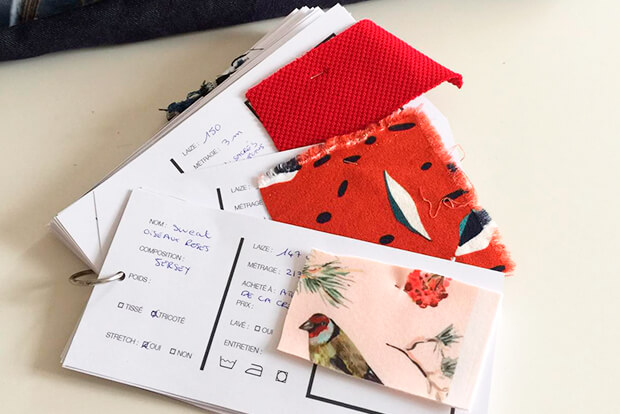
Once the swatch tags are filled in, attach them to the ring. You can even go further and have different rings for different types of fabrics or sort them out by colours to find what you want even more easily.
CREATE THE FOLDING TEMPLATE
Who has never struggled to arrange their fabrics, fold them all perfectly and optimised storage space that we had allocated to them? If you relate to this, we’ve got a tip for you: create one (or more depending on our needs) folding template.
Measure the space you store your fabrics in. Note that to preserve your fabrics better, it is best to store them away from the direct sunlight (or even moonlight) and dust.
Define the dimensions that will be the most appropriate to your space and make your template a bit smaller than the your space. For example, our surface was 47 cm x 56 cm but we subtracted 2 cm on both sides. Our final template mesures 45 cm x 54 cm.
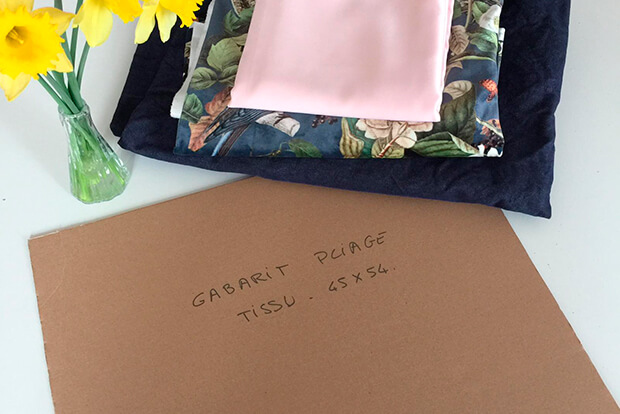
Cut your template in a thick cardboard so you keep it and reuse it for while. If you create more than one template don’t forget to note down which storage space it’s for.
FOLD AND STORE YOUR FABRICS
It seems obvious but we feel we need to write it anyway, we always start by ironing the fabrics to avoid accentuating the creases once folded.
Place your fabric on a plane surface, align the template to the selvedge and fold the opposite selvedge over the template. Get the template back and put it on top to be able to fold over it again and until all the fabric is folded to the required width.Then repeat the steps for the length of the fabric.
This way all your fabric will be folded to the exact same dimensions and you can pile them up nicely in your storage space.
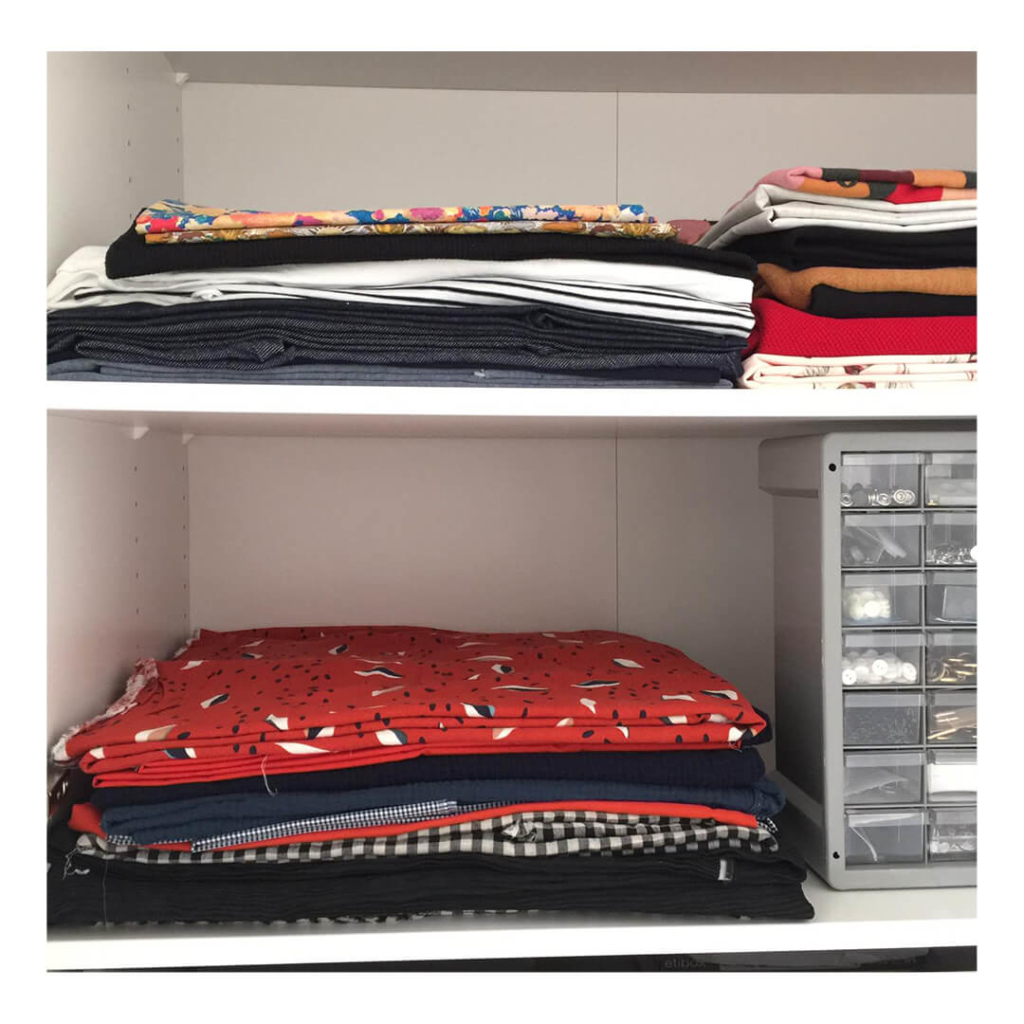
CHOOSING THE FABRIC FOR YOUR NEXT PROJECT
Before buying new fabric for a new project, go through your fabric swatch library. Take out the ones that you think will fit the pattern you want to make. From the shortlisted fabric pick the one you want and only then go into your storage space and take it out to sew it.
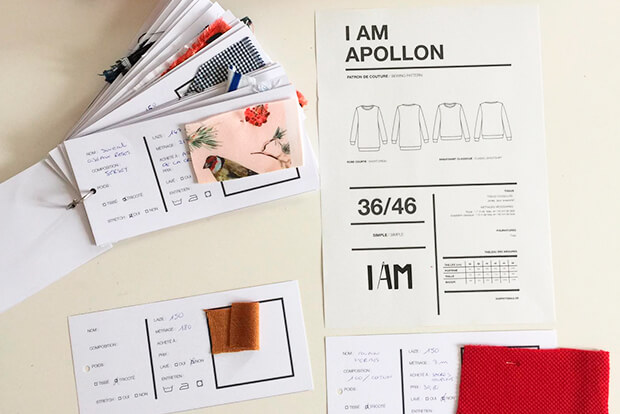
Yes, this method allows you to only take the fabric you need when you’ve decided to use it. This way instead of rummaging through all your fabric piles, you go directly to the one you want and your storage space is always nice and tidy.
And of course, don’t forget to update the swatch tag if you use some of the fabric or throw it away if you have used it all.
YOUR FABRIC STASH IS ORGANISED
Voilà, the cycle is simple: wash, catalogue, iron, fold and store. It’s a habit you need to take at first but we have noticed that if you use the fabrics stash inventory with the pattern inventory you will use the fabrics you own more often than you buy new ones. The planning phase of your project will go even smoother and you’ll make better more informed choices. And if you’re in need of inspiration to get you sew-jo back just go through all those lovely fabric you’ve been storing for years and it will surely come back.
